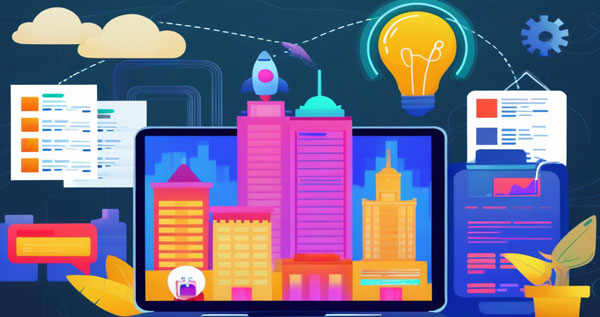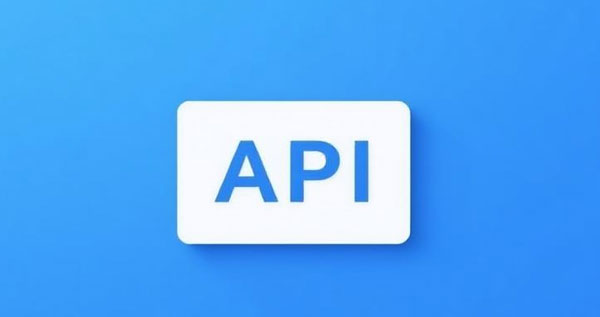Intelligent Product Understanding: Using Machine Learning for Taobao Product Classification and Price Prediction
When handling massive product data from Taobao, manual analysis is not only inefficient but also prone to subjective errors and scalability issues. With machine learning techniques, we can automate product classification, price prediction, anomaly detection, and more, greatly enhancing data utility and decision-making efficiency.
This article presents a practical guide from data preparation and feature engineering to model training and deployment, aiming to build an intelligent prediction system tailored for Taobao product data—ideal for e-commerce platforms or data analysts.
1. Application Scenarios
Machine learning can be applied to various real-world tasks in Taobao product data analysis, such as:
Product Category Prediction: Automatically classify products into categories (e.g., phones, clothing, home goods) based on their titles and descriptions.
Price Prediction Modeling: Predict reasonable price ranges using both textual and structured features, useful for spotting anomalies or identifying high-value items.
Sales Forecasting (Extended): Estimate future sales based on historical data and product attributes to guide inventory and marketing decisions.
2. Data Preparation: Feature and Label Design
Assume the raw data collected from an API or web crawler is structured as follows:
{"title": "Xiaomi Bluetooth Headset Pro Noise Cancellation Edition",
"category": "Headphones & Audio",
"price": 199.00,
"shop_name": "Xiaomi Official Store",
"sales": 3200,
"description": "Bluetooth 5.3 | Active Noise Cancellation | Long Battery Life | Lightweight Fit",
"timestamp": "2024-04-22"
}
We need to engineer features and define labels to provide structured input and learning targets for machine learning models.
Feature Engineering
Feature | Type | Processing Method |
|---|---|---|
title | Text | Vectorization via TF-IDF, Word2Vec, or BERT |
shop_name | Categorical | Label Encoding |
sales | Numerical | Standardization (e.g., StandardScaler) |
timestamp | Temporal | Extract month, day, weekday, etc. |
The description field can also be leveraged as an additional semantic feature to enhance model performance.
3. Classification Task: Product Category Prediction (Multiclass)
Product classification is a multiclass task aimed at automatically assigning a product to its most likely category, aiding search optimization, recommendation systems, and data management.
Model Choices
Traditional Models: RandomForest, XGBoost—fast and interpretable.
Deep Learning Models: TextCNN, LSTM—effective in capturing sequential patterns in text.
Semantic Models: BERT + classifier layers—high precision, strong contextual understanding, but resource-intensive.
Example: TF-IDF + XGBoost for Classification
from sklearn.feature_extraction.text import TfidfVectorizerfrom xgboost import XGBClassifier
from sklearn.model_selection import train_test_split
from sklearn.metrics import classification_report
X = df['title']
y = df['category']
vectorizer = TfidfVectorizer(max_features=3000)
X_vec = vectorizer.fit_transform(X)
X_train, X_test, y_train, y_test = train_test_split(X_vec, y, test_size=0.2, random_state=42)
model = XGBClassifier()
model.fit(X_train, y_train)
y_pred = model.predict(X_test)
print(classification_report(y_test, y_pred))
This example demonstrates how to build a classification model using simple text vectorization and a powerful gradient boosting classifier.
4. Price Prediction: Multi-Feature Regression Modeling
Price prediction is a regression task aimed at estimating a product's reasonable price based on its description and structured data—helpful in anomaly detection and pricing strategy.
Modeling Strategy
The input features should combine various data types:
Title (vectorized)
Sales (numerical)
Category and Shop (categorical, label encoded)
Description (optional semantic feature)
Recommended models include:
Traditional: Linear Regression, RandomForestRegressor, XGBoostRegressor
Deep Learning: MLPs or hybrid architectures with semantic embeddings
Example: RandomForest for Regression
from sklearn.ensemble import RandomForestRegressorfrom sklearn.preprocessing import LabelEncoder
from sklearn.metrics import mean_squared_error
df['shop_encoded'] = LabelEncoder().fit_transform(df['shop_name'])
df['category_encoded'] = LabelEncoder().fit_transform(df['category'])
X_features = df[['sales', 'shop_encoded', 'category_encoded']]
y_price = df['price']
X_train, X_test, y_train, y_test = train_test_split(X_features, y_price, test_size=0.2, random_state=42)
model = RandomForestRegressor()
model.fit(X_train, y_train)
preds = model.predict(X_test)
print("MSE:", mean_squared_error(y_test, preds))
This model effectively captures non-linear interactions among features, suitable for complex pricing patterns in e-commerce.
5. Deployment and Service Integration
After training, the model can be deployed as a web API to provide real-time prediction services.
Building a Simple Prediction API with Flask
from flask import Flask, request, jsonifyimport joblib
app = Flask(__name__)
model = joblib.load('price_predictor.pkl')
@app.route('/predict', methods=['POST'])
def predict():
data = request.json
input_vec = [data['sales'], data['shop_encoded'], data['category_encoded']]
prediction = model.predict([input_vec])
return jsonify({'predicted_price': round(prediction[0], 2)})
if __name__ == '__main__':
app.run(port=5000)
This API can be consumed by frontend systems or other modules, and further extended to production-level deployment using Docker, Gunicorn, or cloud services.
6. Extended Applications and Optimization Directions
To further improve model robustness and performance, consider the following:
Semantic Embedding Models: Replace TF-IDF with BERT or similar embeddings for better context understanding.
Automated Labeling Pipeline: Use high-confidence predictions to create new training data in semi-supervised learning settings.
Model Versioning and A/B Testing: Use tools like MLFlow or DVC to track experiments and compare model versions in production.
Multi-Task Learning: Train classification and price prediction jointly in one deep learning architecture for enhanced generalization.
Conclusion
By leveraging machine learning, we can efficiently classify and predict prices for massive product datasets, laying a solid foundation for search optimization, anomaly detection, and recommendation systems. Combined with modern data infrastructure (e.g., Kafka, ELK stack), a comprehensive intelligent product analysis platform can be built to support business growth and user experience optimization.
Articles related to APIs :
From Data to Product: Building Search, Visualization, and Real-Time Data Applications
Enhanced Data Insights: Analyzing Taobao Product Trends and Anomalies with the ELK Stack
Introduction to Taobao API: Basic Concepts and Application Scenarios
Taobao API: Authentication & Request Flow Explained with Code Examples
Using the Taobao API to Retrieve Product Information and Implement Keyword Search
If you need the Taobao API, feel free to contact us : support@luckdata.com




